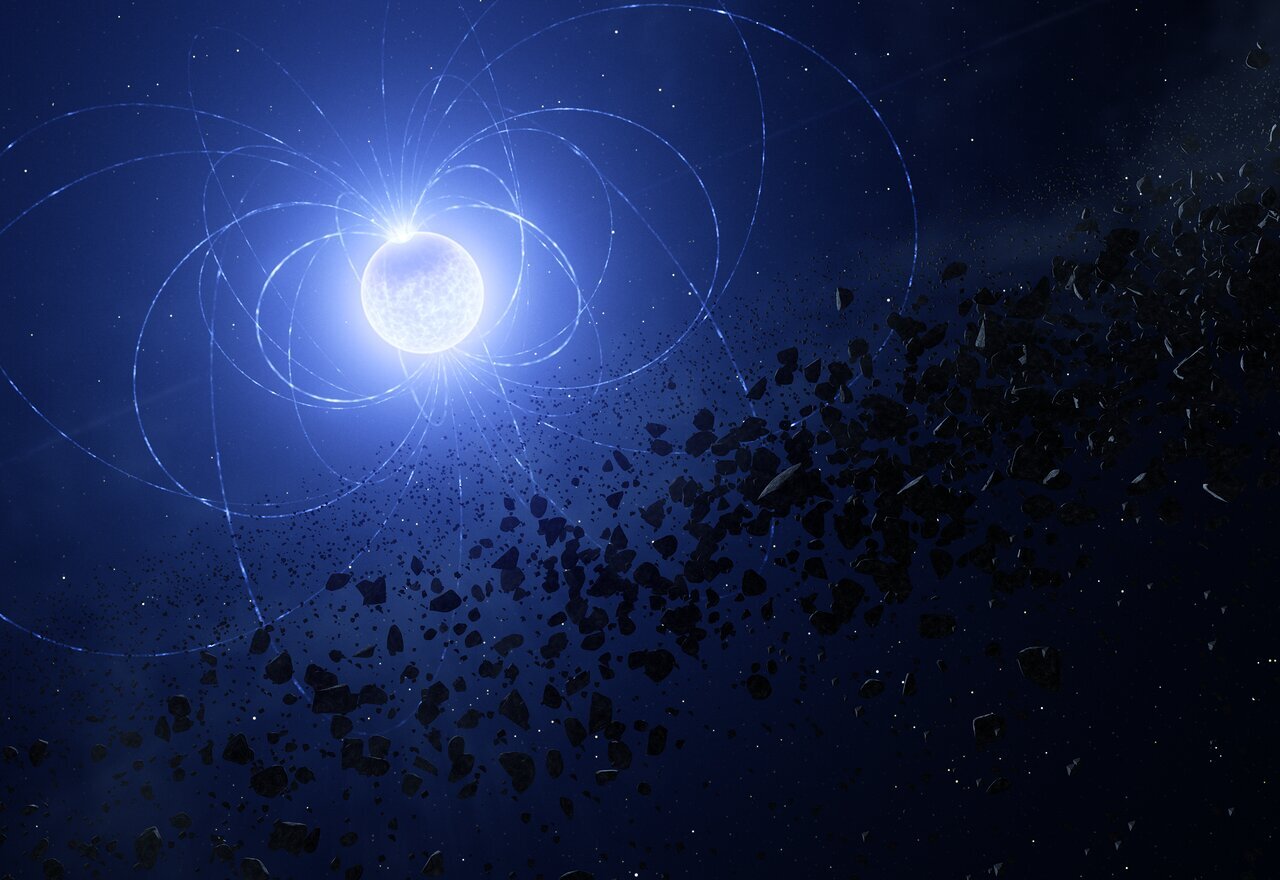A Unique Scar on a Star Shows It Swallowed Planetary Material
Follow us on Google News (click on ☆)

This artist's impression shows the magnetic white dwarf WD 0816-310, where astronomers have discovered a scar imprinted on its surface resulting from the ingestion of planetary debris.
Credit: ESO/L. Calçada
An international team of astronomers, using the Very Large Telescope (VLT) of the European Southern Observatory (ESO) located in Chile, has for the first time highlighted a unique scar on the surface of a white dwarf, a testament to this cosmic process.
The white dwarf WD 0816-310, a remnant the size of Earth from a star similar to our Sun, albeit slightly more massive, displays a concentration of metals on its surface. This "scar" is the direct result of ingesting planetary debris, potentially including a fragment the size of Vesta, the second-largest asteroid in our solar system. This discovery, published in The Astrophysical Journal Letters, sheds new light on the crucial role of the star's magnetic field in this process.
The researchers observed that the detection of metals on WD 0816-310 varied with the star's rotation, indicating that these metals were concentrated in a specific area rather than evenly distributed over its surface. This concentration of metals aligns with variations in the magnetic field of the white dwarf, suggesting that the metallic scar is located at one of its magnetic poles. This process, whereby the magnetic field channels the metals toward the star, creates a distinct scar. This phenomenon is reminiscent of the mechanisms at work in the formation of auroras on Earth and Jupiter, where the magnetic field guides ionized material toward the poles.
This study also illustrates how planetary systems can remain dynamically active even after their central star's "death" phase. Observations made with the VLT and the FORS2 instrument, as well as archived data from the X-shooter instrument, were crucial in linking the metallic scar to the white dwarf's magnetic field.